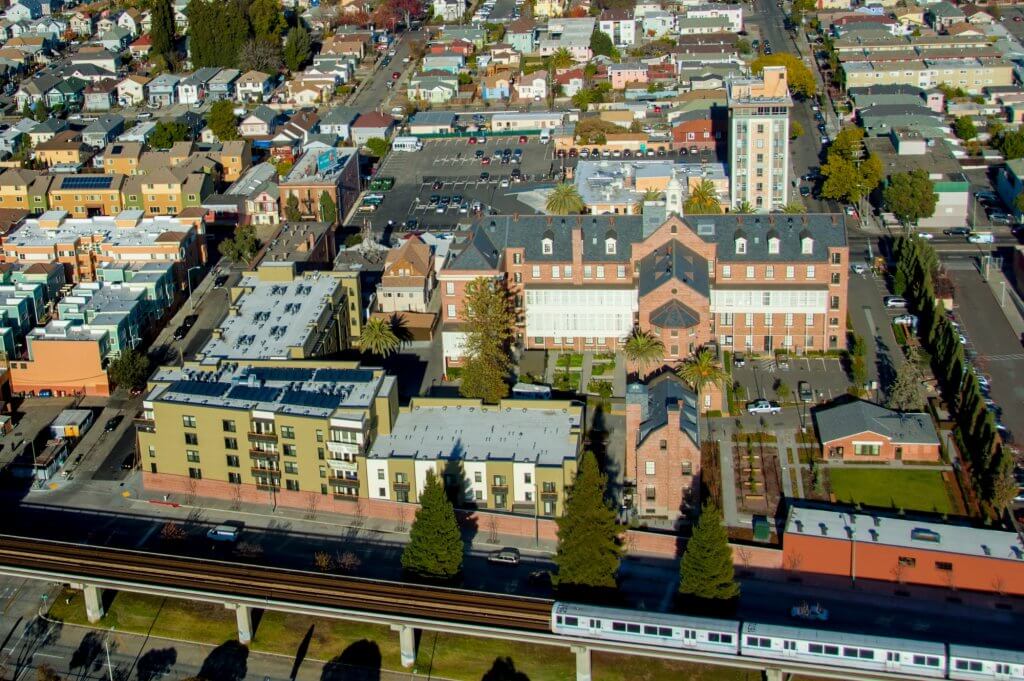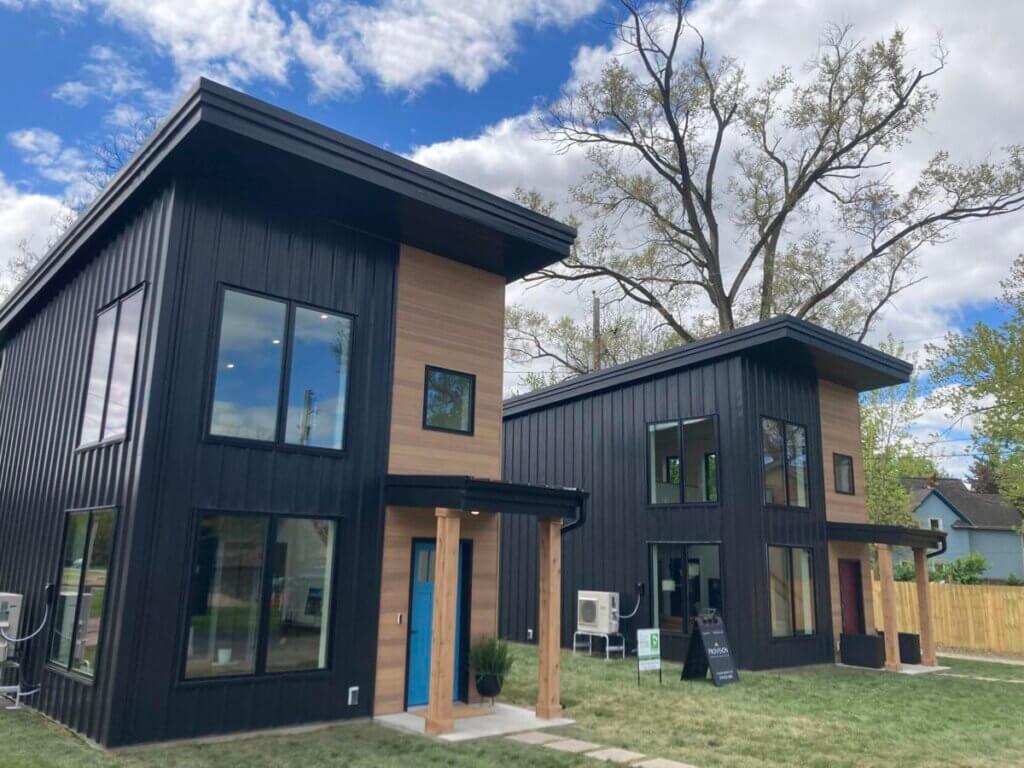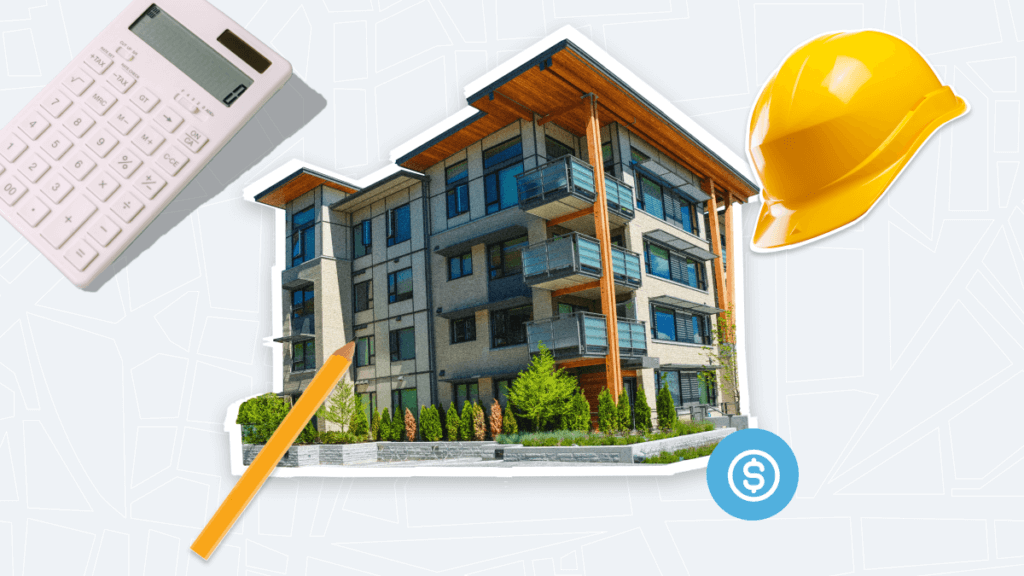Scaling Off-Site Production in the United States: Lessons Learned From Swedish Leader Lindbacks
Published On November 9, 2017
When it comes to innovation in housing, what does the U.S. have to learn from Sweden? More than you might think.
Though they have different histories, economies and social contexts, Sweden and the United States share many housing market challenges – including significant barriers to new construction and high cost of production leading to rapidly appreciating housing prices, especially in urban centers. The Terner Center recently published a policy brief providing a detailed examination of the Swedish housing system, and a companion summary outlining key similarities and differences with the United States.
And last month, the Terner Center for Housing Innovation hosted leaders from Lindbäcks – Sweden’s market leader in industrialized construction of wood-frame multifamily projects – for a multi-day exchange of ideas, challenges, and best practices within off-site (or as they would say “volume” or “industrialized”) multifamily construction that address some of these shared challenges. The Terner Center has been actively engaged in research efforts to better understand the potential cost and time savings of off-site production, (at a time when California and the country are facing a severe housing crisis) and were delighted to welcome this team to discuss our similar and divergent challenges and ideas for the future of this industry.
The visit was enlightening, with a number of important lessons for the off-site construction industry as it gains momentum and attempts to scale here in the United States.
Lindbäcks specializes in 2-8 story wood-frame residential construction, produced through industrialized methods. They leverage the efficiencies of factory production to construct finished volumes, with everything from ceiling, floor, and wall blocks to furnishings with doors, windows, kitchens, tiled bathrooms, heating, and water as well as electrical installations and painting completed. These modules are then transported and assembled on the construction site. Lindbäcks currently produces 800 volumes annually – or about a quarter of the Swedish wood-frame multifamily market – with a second “next gen” factory opening in December 2017 that will expand capacity by 200 percent. Their strong market share is attributable to several creative approaches to overcoming industry barriers and a principled business model described below.


Though pre-fabrication has a long history in Sweden, no other company in the country has achieved such scaled industrialized multifamily production; the keys to Lindbäcks’ success are company rather than country-specific.
OVERCOMING BARRIERS TO INDUSTRIALIZED CONSTRUCTION
The 2017 Terner Center paper identified several impediments to scaling industrialized construction, and Lindbäcks has employed creative solutions addressing many of these shared challenges in their work. A few examples most pertinent to the United States context are highlighted below:
- Technical Challenge: Off-site construction offers less flexibility in the timing and type of adjustments that can be made to unit design.
- Lindbäcks Approach: Industrialization implies a greater level of standardization than that needed by on-site construction. Lindbäcks has found that striking an appropriate balance between customization and standardization is key: too much customization can sink the business model, but not enough can also compromise the success of a project. Lindbäcks has consequently learned the value of saying no to potential projects that may require over-customization (something that many in the construction industry are not accustomed to doing). Instead, they pursue an 80 percent standardization/20 percent customization mix, enabling both the benefits of efficiency along with a level of creativity necessary for successful projects. To achieve this in practice, they work with external architects but choose to engage very early on in the design process, as soon as the first architect’s sketch. This, along with creating a comprehensive architect manual on industrialized construction, ensures all team members are on the same page at the outset and limits costly design adjustments later on in the project.
- Operational Challenge: The off-site construction business model struggles with high fixed costs amidst a cyclical and sometimes unpredictable real estate market.
- Lindbäcks Approach: Lindbäcks’ business model operates with a 9-12 month pipeline of confirmed projects, ensuring constant production. A fixed production schedule uniquely enables precise forward-looking planning and its large customer base moderates uncertainty. They also ensure they are producing a diversity of product types – including rental apartments, condominiums, student housing, elderly housing, and even hospitality – which provide a range of both cyclical and counter-cyclical business, contributing to pipeline stability. The Lindbäcks company also directly develops housing, accounting for 30 percent of factory production and providing further confidence in a continuous pipeline.
- Coordination Challenge: A lack of familiarity on the part of general and sub-contractors, among others, can present challenges in efficient coordination.
- Lindbäcks Approach: Lindbäcks operates as its own general contractor and assembles modules on-site with their own employees. This reduces coordination issues and guarantees informed oversight of each stage of the construction process. They are also able to serve as a one-stop shop for customers, increasing efficiency and assuaging some uncertainty on the part of the purchaser.
LINDBÄCKS KEYS TO SUCCESS
In addition to the thoughtful business model approaches above, Lindbäcks upholds a number of key guiding principles that are foundational to their company’s success:
- Focus on Human Capital and Culture: Lindbäcks recognizes that their success is rooted in an ability to attract and retain top talent. Especially given the company’s remote location (~500 miles north of Stockholm), this is facilitated through a dynamic and inclusive culture. They place special emphasis on attitude and cultural fit in recruitment, with training for technical skills viewed as the easy part. Experienced factory employees all receive the same salary, fostering a sense that each team member is a valued contributor. Daily morning “huddles” – where factory groups meet to review the previous day, plan for the upcoming day, and discuss issues – create a forum for open communication, enable responsive problem troubleshooting, and ensure team members are on the same page. This empowering and supportive culture has allowed Lindbäcks to attract a diverse team of top talent, including a relatively high proportion of women, who are traditionally under-represented in the construction fields.
- Optimization of Man and Machine: Lindbäcks views the relationship between human capital and machine as synergistic: people are crucial for making swift and subtle judgement calls throughout the production process and the machine is optimized to deliver product with reliable speed and precision; together, human and machine achieve much more than either can achieve on their own.
- Pursuit of Innovation: Despite significant strides in industrialized production techniques, an ingrained forward-thinking culture continues to propel Lindbäcks toward further innovation. They closely partner with the nearby Luleå University of Technology, investing three percent of annual revenue toward research and development. For comparison, construction companies in the United States conducting research and development (R&D) – a likely small portion of the industry – are estimated to spend about one percent of revenues on R&D efforts.[1] This pursuit of innovation has led to notable advances in coordinating computer-aided design with the fabrication process, developing, for example, a full “slide in” bathroom unit that is produced in a separate nearby factory enabling simultaneous construction, and employing LEAN manufacturing methods that eliminate waste and improve product quality.
As the demand for more affordable construction methods increases in the United States, and as off-site construction becomes an increasingly sought-after option, there are numerous lessons to be learned from the Lindbäcks’ experience on how to prudently scale operations. Coupling an openness and adaptability to new ideas with a commitment to core company principles is imperative for navigating new frontiers of innovation. Ultimately, their long-term mindset has allowed them to achieve impressive progress and build a foundation for future success. Housing producers in the United States have much to learn, and the Terner Center very much looks forward to future and ongoing opportunities for learning and collaboration with Lindbäcks and others leading the way on this innovative approach to home-building.
[1] Beginning with 2011, construction industry R&D spending has been included in the catchall ‘nonmanufacturing’ industry classification because of the relatively low amount of R&D activity historically reported by such companies. As of 2010, the last year recorded, construction companies spent approximately 0.8% of revenues on R&D efforts.
National Science Foundation, National Center for Science and Engineering Statistics. 2016. Business R&D and Innovation: 2013. Detailed Statistical Tables NSF 16-313. Arlington, VA. Available at http://www.nsf.gov/statistics/2016/nsf16313/.





